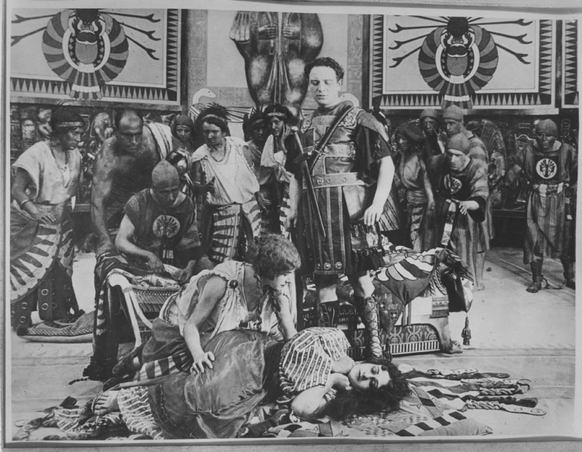The first recommended title following my screening of Intolerance for the Great Movies – 100 Years of Film is this epic tale set during the Punic Wars. Apparently the director of Intolerance, D.W. Griffith, was highly influenced by this film when he saw it, and created Intolerance to tell his own epic.
The film follows a number of characters as they are caught up in events in and around Carthage, almost all of them center around a young girl, Cabiria (Carolina Catena and Lidia Quaranta). Throw in a Roman named Fulvius (Umberto Mozzato) with his slave Maciste (Bartolomeo Pagano), a religious sect dedicated to the god Moloch, and a powerful princess Sophonisba (Italia Almirante-Manzini), some epic looking battle scenes, and a moving camera (something that didn’t happen a lot in film in 1914) and you have a pretty engaging tale.
Young Cabiria doesn’t have it easy, things start out pretty roughly, despite being the apple of her father’s eye. A volcano ruins her home, and she’s spirited away from her family by her nurse, Croessa (Gina Marangoni), and believed to be dead. From there, the pair are seized by Phoenician pirates, sold into slavery, in fact, the young girl is chosen to be sacrificed, but is rescued by Fulvius and Maciste.
Wrapped around this is the war between Rome and Carthage, power plays, lovers lost, plans revealed, foiled and made anew.
It’s a pretty encompassing film, and entertains from the go, there are some wonderful split-screen shots, giving the scenes depth, incorporating special effects and giving the film a rather epic look.
Pastrone has crafted a lengthy epic, that doesn’t seem to lose its human touch, never forgetting the human side of the conflict. Despite being named for her, Cabiria doesn’t spend as much time on the screen as the other characters, and in fact a large portion of the film, once the plot is underway, is spent with Fluvius and Maciste.
The set, the temple of Moloch is large, and frightening, part of it reminds me of the temple of Kali from Temple of Doom, and much like the sets in Intolerance, you don’t often see sets anymore on that scale, at least not without computer-generated extensions (I know there are still some that do, but those are the exception, and not the rule).
Both of these films, leading off the historical section of the Great Movies book have been stunning so far, and I’m quite looking forward to seeing what other experiences await me in among the titles and recommendations. I think this is the section, that I am least familiar with, and so will feature the most films I’ve neither heard of or seen, and some I have, and have never had the opportunity to examine. For instance, the next title recommendation is The Birth of a Nation – it should be an interesting experience.
If you are looking for something amazing, and aren’t averse to silent films, check out Cabiria. It’s worth your time.



